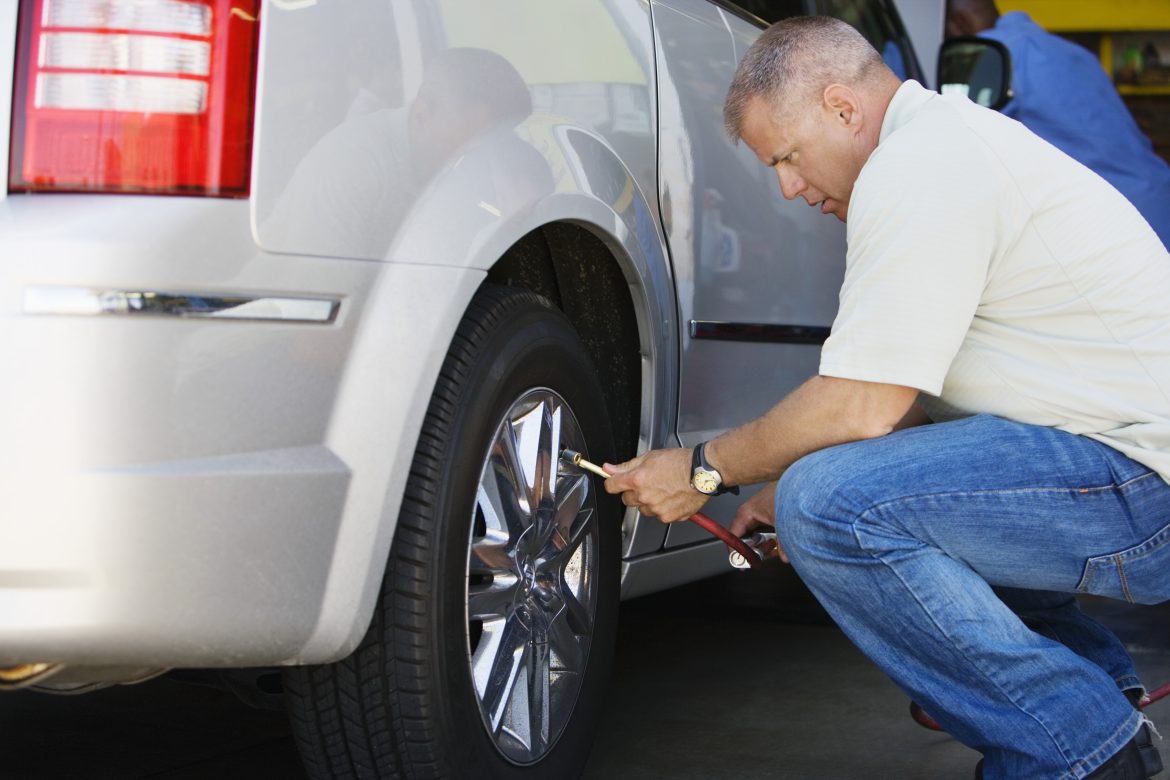Modern cars often have a placard inside the driver’s door with the recommended tyre pressure. If there isn’t a sign on the door, the owner’s manual typically has the details. The majority of passenger cars recommend 32 psi to 35 pressure in the tyres while they are cold. Because heat is produced when tyres make contact with the ground as they roll along the ground, it is best to check tyre pressure when the tyres are cold. This will prevent air pressure and tyre temperature from rising. For the best accurate reading, make sure the automobile has rested overnight or at least for a few hours.
Don’t ever fill your tyres past the pressure indicated on the tyre. The tyre’s maximum allowable pressure, not the optimum pressure for the car, is thereby represented by that number. Riding on underinflated tyres can hasten tyre wear due to increased friction while driving on overinflated tyres can offer you a bumpy ride and a poorly handled automobile. In any case, not inflating your tyres to the recommended pressure will have a detrimental impact on tyre wear and ride quality as well as your maintenance plan for tyre replacement.
MOT Test London made it easy to book an appointment online.
Causes
1. Temperature Variations
Variations in the outside air’s temperature are one of the most frequent causes of tyre pressure loss and the main factor in a tyre losing pressure when there is no leak. Due to the nature of air, which causes it to expand when warmed and contract while cooled, temperature variations have an impact on tyre pressure.
For each 5.5°C drop in temperature, tyres can shed up to 2 percent of their air pressure. The opposite is also true, and a temperature rise of 5.5°C can result in a 2 percentage rise in tyre pressure. When you inspect your tyres early and discover that they are completely underinflated, but by the time you reach the air pump at the gas station, you discover that the pressure has been restored to normal, this might be puzzling. There is no requirement to add additional air to tyres that drop air pressure due to temperature fluctuations, provided there is also no harm to your tyre, rim, as well as valve.
2. Tread Puncture
Your tyres won’t often sustain much harm from broken glass (such as from a glass bottle), but there are some nasty things on the road that can puncture the sidewall or tread. However, certain smaller foreign items can firmly embed themselves into your tyre tread, keeping it inflated—until it isn’t—instead of immediately causing a flat tyre. Air loss could result from the object that is being moved by a slight bump. When a tyre is being driven on for an extended period, tread separation may even begin to appear. This is a very dangerous condition that may remove the tread from the tyre, which is very bad.
If discovered quickly enough, a tyre plug or patch might be an option for tiny tread punctures. The best option is to buy a new tyre because these tyre fixes are typically only temporary. For an evaluation, see your mechanic or a representative at a reputable autobody shop.
3. Defective Valve
The part of your tyre that holds air inside and enables air pump inflation is what we call the tyre valve. When closed, it should be completely airtight, allowing no air to escape and properly preserving tyre pressure.
However, whether or not your automobile is moving, a malfunctioning or damaged tyre valve can result in air being thus allowed to leak slowly, gradually lowering your tyre pressure. If you ever replace your valve stem core, be cautious not to over-tighten it. The valve stem core is the tube inside the valve that feeds air into the tyre, and over-tightening it can also result in air loss.
4. Tyre Bead injury
Any type of tyre bead area issue affects PSI levels as a different type of tyre damage. This can result in bead chunking or damage to the rim’s bead seat. Such problems result in an abrupt loss of PSI because the wheel-bead contact is being destroyed.
Tyre bead damage cannot be however repaired, in contrast to some nail punctures. As a result of these problems, tyres quickly lose air since they have damaged sidewalls and wheels. So it makes sense to stop by a tyre store.
Measures to fix the issue
1. Making Valve Stem Repairs
A new valve core and a tool for removing valves are required. If you find it simpler, you might also need a car jack and a lug wrench to remove the wheel.
By placing the removal tool’s tip into the stem and turning it counterclockwise, you can remove the valve core from the wheel where the tyre slowly loses air. Before installing a new core, make sure to clean the stem if you notice any corrosion. Pump up the tyre after screwing in a new core.
2. Keeping the Right Inflation Level
Check frequently.
Once a week, check the air pressure in your tyres to see if any of them are losing air more slowly than the rest.
When cold, check.
Verify the tyres while they are still cold. The tyres don’t need to cool down for a long period; two hours should be sufficient. Before checking the pressure, ensure sure the car has been sitting in the shade.
Remove 2 psi from the pressure to view the real inflation rate if you’ve been driving for more than 15 minutes or the automobile has been in the sun.
Utilize an accurate pressure gauge.
You should calibrate your pressure gauge to get the correct reading; several tyre shops do this. Every psi loss is significant to pay attention to as a tyre gradually loses air. For light passenger automobiles, even a new gauge may show a change of up to 3 psi, which is a significant amount.
MOT Bermondsey checks the inflation level of the tyres.

